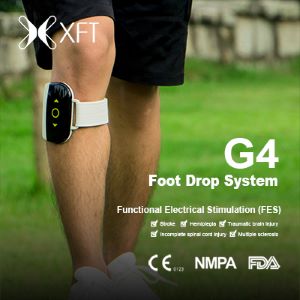Complementary Integrative Rehabilitation Medicine
Association between advanced glycation end products and sarcopenia in Chinese older adults: mediation of osteoporosis
Wednesday, November 1, 2023
9:40 AM - 9:46 AM
Location: Station 10
- XZ
Xingyu Zhang
Postgraduate Student
Tianjin University of Sport
Tianjin, China (People's Republic)
Poster Presenter(s)
Research Objectives: To investigate the association and mediation pathways of advanced glycation end products (AGEs), osteoporosis and sarcopenia among the elderly in China.
Design: A cross-sectional study.
Setting: All participants are elderly people in the general community.
Participants: A total of 1991 older adults aged ≥ 60 were selected.
Interventions: none
Main Outcome Measures: The odd ratio of logistic regression and the significance of mediating effect.
Results: Among 1991 participants (854 men, mean age 72.4 ± 5.9 years), the prevalence of osteoporosis was 40.5%(n=807) and that of sarcopenia was 18.5%(n=368), mean AGEs value was 1.68±0.44 arbitrary unit(AU). Since the level of AGEs was affected by age and gender, we made a gender-stratified, age-adjusted AGEs quartiles. After adjusting for potential confounders such as gender, BMI, diabetes, depression and fall history, the highest AGEs quartile (Q4) was significantly associated with sarcopenia(OR2.27 95% CI[1.55, 3.36]) compared with the lowest AGEs quartile (Q1), but not with the presarcopenia(OR1.04 95% CI[0.61, 1.78]). Furthermore, in the mediation analysis, whether AGEs is regarded as a continuous variable(Za*Zb=22.823, 95%CI[9.378, 38.613], the 95% CI does not contain a zero) or a categorical variable(Zmediation=2.938>1.96, P< 0.05), osteoporosis played a partial mediating role in the association between AGEs and sarcopenia.
Conclusions: Our finding showed that AGEs were associated with sarcopenia but not presarcopenia. Osteoporosis played a mediating effect on the association between AGEs and sarcopenia. We suggest that AGEs and osteoporosis examination should be carried out among community older adults to slow down the decline of physical performance and the occurrence of sarcopenia.
Author(s) Disclosures: none
Design: A cross-sectional study.
Setting: All participants are elderly people in the general community.
Participants: A total of 1991 older adults aged ≥ 60 were selected.
Interventions: none
Main Outcome Measures: The odd ratio of logistic regression and the significance of mediating effect.
Results: Among 1991 participants (854 men, mean age 72.4 ± 5.9 years), the prevalence of osteoporosis was 40.5%(n=807) and that of sarcopenia was 18.5%(n=368), mean AGEs value was 1.68±0.44 arbitrary unit(AU). Since the level of AGEs was affected by age and gender, we made a gender-stratified, age-adjusted AGEs quartiles. After adjusting for potential confounders such as gender, BMI, diabetes, depression and fall history, the highest AGEs quartile (Q4) was significantly associated with sarcopenia(OR2.27 95% CI[1.55, 3.36]) compared with the lowest AGEs quartile (Q1), but not with the presarcopenia(OR1.04 95% CI[0.61, 1.78]). Furthermore, in the mediation analysis, whether AGEs is regarded as a continuous variable(Za*Zb=22.823, 95%CI[9.378, 38.613], the 95% CI does not contain a zero) or a categorical variable(Zmediation=2.938>1.96, P< 0.05), osteoporosis played a partial mediating role in the association between AGEs and sarcopenia.
Conclusions: Our finding showed that AGEs were associated with sarcopenia but not presarcopenia. Osteoporosis played a mediating effect on the association between AGEs and sarcopenia. We suggest that AGEs and osteoporosis examination should be carried out among community older adults to slow down the decline of physical performance and the occurrence of sarcopenia.
Author(s) Disclosures: none

.jpg)
